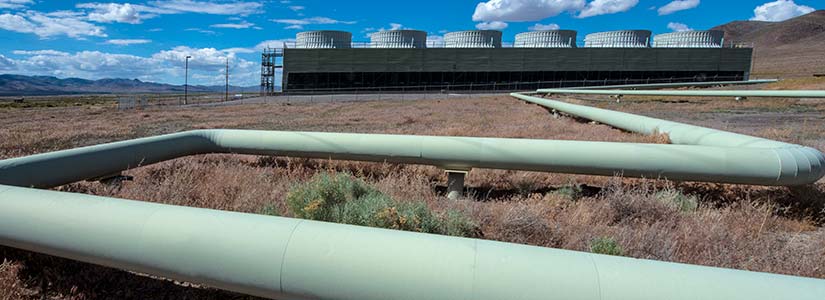Power Plant Modeling and Simulation
NLR conducts advanced modeling and simulation of geothermal power plants to develop innovative ways of integrating geothermal power into the electricity grid.

Capabilities
NLR's modeling and simulation capabilities offer an efficient approach for plant design, operation optimization, and life-cycle techno-economic assessment.
- Power plant power cycling modeling
We model binary-fluid power cycles, steam-Rankine cycles, and other advanced power cycles under design and off-design operation conditions. Real power plant operation data have been adopted for the validation of power cycle modeling to improve operational efficiency and market demand matching.
- Flexibility modeling
We model the technical and economic potential for geothermal power plants to operate flexibly.
- Techno-economic potential analyses
We analyze the techno-economic potential of power plants under various grid scenarios to help operators meet market demand and maximize their resources.
Flexible Geothermal Generation
Flexible geothermal can help firm the energy system, allowing for imbalance, and provide supplemental reserve and ancillary services such as frequency control and capacity.
Ormat's Puna geothermal facility in Hawaii provides flexible capacity for grid support using automatic generation control. At Puna, the geothermal power plant's conversion of fuel to electricity is completely in the control of the plant operator, and changes to electrical output can occur quickly, with up to 30% of nominal output per minute. NLR engineers and analysts are looking at innovative new ways to deploy this flexible capability at geothermal plants throughout the U.S.
Resource Hybridization
NLR has investigated the potential to use geothermal during and after the oil/gas production cycle and at other fossil fuel thermal/power generation units. NLR has experience and expertise in developing, optimizing, and assessing hybrid system concepts.
Publications
Global Value Chain and Manufacturing Analysis on Geothermal Power Plant Turbines, Transactions (2017)
View all NLR publications about geothermal research.
Contact
Share
Last Updated Dec. 4, 2025
